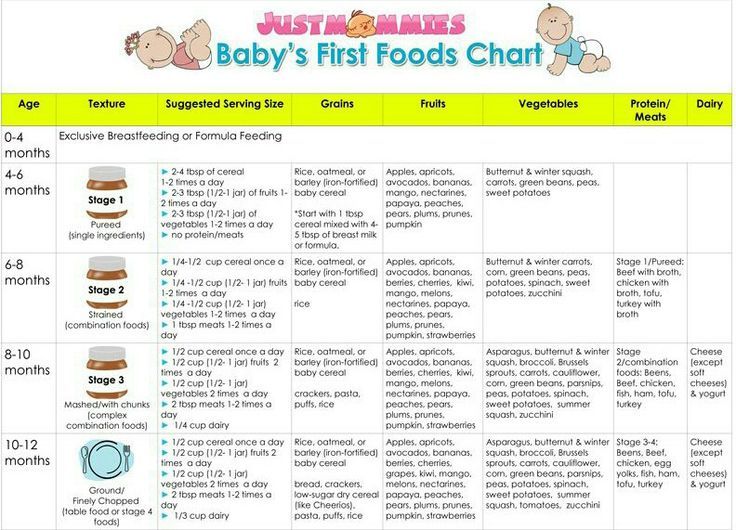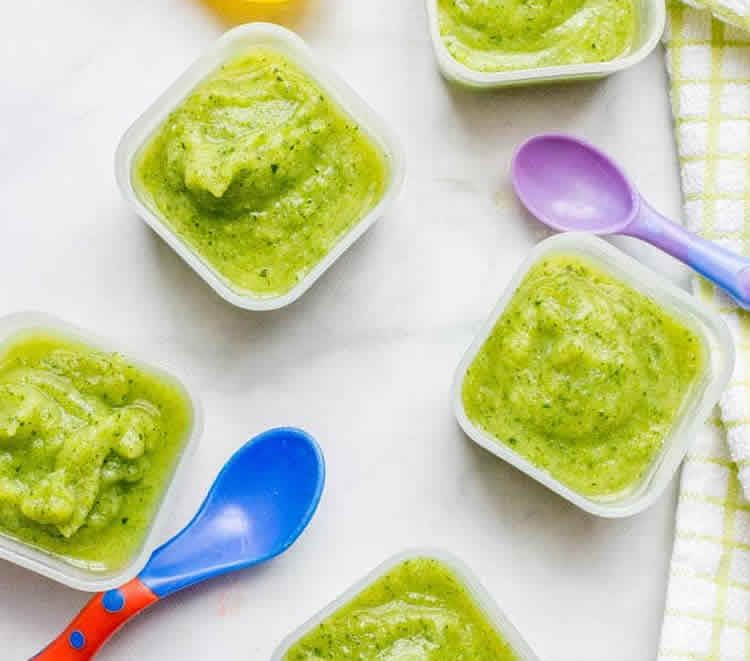Whole grain foods for babies
The Importance of Whole Grains for your Baby
Previous | Next
As consumers, we see the word “whole grain” thrown out a lot on the packaging of all types of products, but what exactly, is meant by whole grains? What are true whole grains and why do they matter? In this article, we’ll cover what defines a true whole grain, their benefits, and common ways to introduce them into baby’s diet.
What are whole grains?
Until the 19th century, all cereals were consumed as whole grains. Now, however, it has become difficult to identify what whole grains are, where to buy them, and how to best prepare them. Let’s start by clearly defining a whole grain.
A complete whole grain consists of three layers: the bran (outer layer), the germ (middle layer), and the endosperm (inner part). The reason we talk a lot about “whole grains” versus refined grains is because since the Industrial Revolution, most grain products have been stripped of their bran and germ layers, leaving just the endosperm. This created grain products which were considered at the time to be superior in taste, texture, color, and most importantly, extended their shelf life for supermarket sales. If you’ve ever tried to bake a cake with 100% whole wheat flour instead of all-purpose flour, you’ll quickly see and understand the difference.
The only problem with these “improvements” is that this refinement stripped away the most nutritious parts of the grain leaving them depleted of most nutrients. The bran and the germ are packed with the most vitamins, minerals, and phytochemicals found in the grain. The bran delivers fiber for example, while the germ is rich in lipids. Not to mention much research has been done on the efficacy of a food being consumed as a whole, and how each part works together in synergy. In other words, a food is not just a sum of its parts, but all parts work in unison to provide optimal nutrition. So although all purpose flour might make a fluffy cake, it doesn’t make for a healthy food.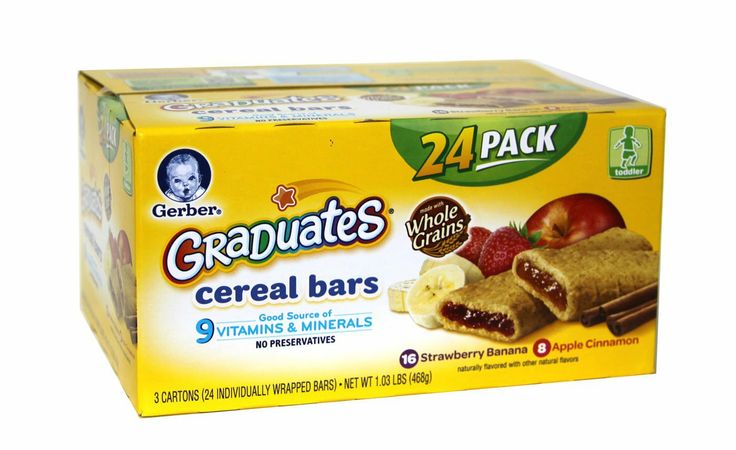
As a result, many products containing refined flours, such as common breakfast cereals and breads, are then enriched, which means synthetic vitamins are added back into them. This refinement did not just impact flour. Many other grains were processed down, removing their bran and germ layer, often to quicken cooking time and make the grain softer. Some examples of this are pearled barley (bran removed) and white rice (bran and germ removed).
Why are whole grains important for your baby?
Throughout the world, infant cereals are often one of baby’s first transitional foods and for good reason. They provide a ton of energy, deliver carbohydrates, fiber and protein, as well as vitamins, minerals, and even contribute to a healthy development of gut bacteria. Further, they are excellent vehicles for iron fortification and have a soft, pleasing texture for babies. All in all, whole grains make up the primary source of the world’s food store, and developing a preference for whole grains begins in infancy and can help develop healthy eating habits for life.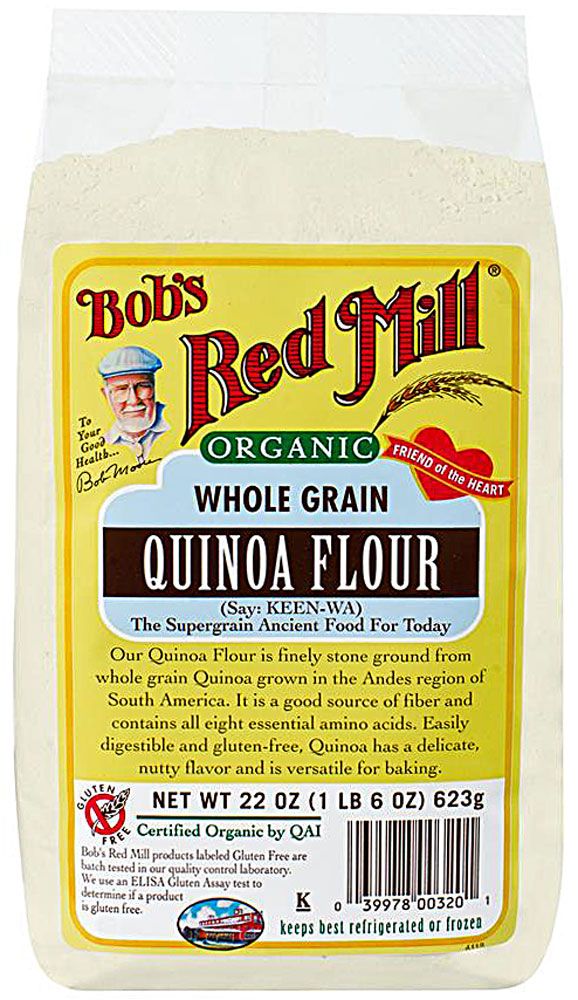 Unfortunately, many industrialized infant cereals are highly processed and are not delivering the benefits, taste and texture of whole grains. As a result, there has been an effort to incorporate not only infant cereal but also make sure babies are experiencing whole grains in their complementary feeding as well.
Unfortunately, many industrialized infant cereals are highly processed and are not delivering the benefits, taste and texture of whole grains. As a result, there has been an effort to incorporate not only infant cereal but also make sure babies are experiencing whole grains in their complementary feeding as well.
Recommendations / How to incorporate whole grains into a baby's diet?
Despite mounting evidence of the value of whole grains in the human diet, specific recommendations regarding a baby’s intake of infant cereals, types of cereals, and degree of processing are still largely undefined. However, evidence strongly suggests that whole grains are better than processed infant cereals, and that whole grains should be introduced as early as possible because that is when taste preference and eating habits are shaped. Due to the discovery of the importance of whole grains starting in infancy, there has been a push to offer some guidelines for 6-24 months. In Spain, for example, they recommend half of all cereal intake in infants should be whole grains. Australia recommends 16 servings a week of whole grains for 12-24 month olds. In the US, one nutrition panel recommends 1 ounce of whole grain a day starting at 12 months and working up to 2.5 ounces a day by 36 months.
Australia recommends 16 servings a week of whole grains for 12-24 month olds. In the US, one nutrition panel recommends 1 ounce of whole grain a day starting at 12 months and working up to 2.5 ounces a day by 36 months.
Some examples of whole grains that can be served to baby include: millet, wheat, oats, maize, rye, barley and brown rice. Some “pseudocereals” which are not exactly cereals but offer equally nutrient-dense profiles include quinoa, amaranth and buckwheat. Most of these whole grains can be cooked up soft, pureed, and mixed with a fruit or vegetable for a filling meal. When shopping for packaged foods and bread products, search for ones which incorporate whole grain flours, such as whole wheat and rye. When buying flours for baking, consider incorporating whole grain flours into your baking mixes. One of the quickest and easiest ways to incorporate whole foods into baby’s diet is with oats for breakfast.
At Amara, we offer a whole-grain based Breakfast Pack. Our Oats n’ Berries is a base of 100% oats, and our Ancient Grains is a blend of two supergrains, oats and amaranth. With no added sugar, a whole grain profile and delicious taste, this breakfast pack is ideal for babies and big kids alike. Simply mix the packet with the liquid of your choice (breast milk for babies, possibly whole milk or nut milks for bigger kids, or even water anytime), mix to your desired consistency, and serve! It’s delicious warm or cold, and can be endlessly customized with chopped nuts, berries, sprinkles of cinnamon, etc. Rest easy knowing you are building healthy eating habits for life and your little ones are getting their daily dose of whole grains. Shop our Breakfast Pack HERE.
Our Oats n’ Berries is a base of 100% oats, and our Ancient Grains is a blend of two supergrains, oats and amaranth. With no added sugar, a whole grain profile and delicious taste, this breakfast pack is ideal for babies and big kids alike. Simply mix the packet with the liquid of your choice (breast milk for babies, possibly whole milk or nut milks for bigger kids, or even water anytime), mix to your desired consistency, and serve! It’s delicious warm or cold, and can be endlessly customized with chopped nuts, berries, sprinkles of cinnamon, etc. Rest easy knowing you are building healthy eating habits for life and your little ones are getting their daily dose of whole grains. Shop our Breakfast Pack HERE.
References:
JF Haro-Vicente Sensory Acceptability of Infant Cereals with Whole Grain in Infants and Young Children. Nutrients. 2017 Jan; 9(1): 65.
M Klerks et al Infant Cereals: Current Status, Challenges, and Future Opportunities for Whole Grains.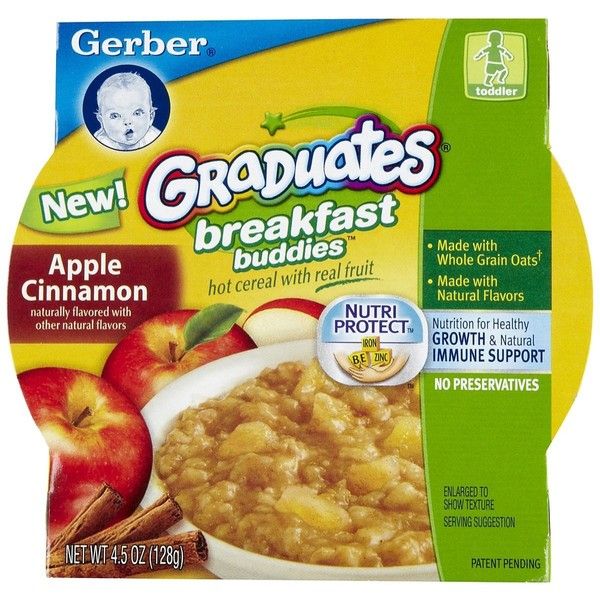 Nutrients. 2019 Feb; 11(2): 473
Nutrients. 2019 Feb; 11(2): 473
Article researched by:
Amara's Chief Nutritionist: Sonia A. Schiess, PhD in Nutrition, specialized in the introduction of solids and liquids to infants. Sonia's passion started when she was studying nutrition and dietetics in university, completing a post degree in Human Nutrition. Later on, she completed her PhD as a nutritionist, with a focus on introducing food in the first year of a baby's life. Her wide experience gives her a unique perspective, drawing from her time in clinics, hospitals, independent consulting and university research. She's authored several papers including "Introduction of complementary feeding"; "Introduction of potentially allergenic foods in the infant's diet during the first year of life" and "Intake of energy providing liquids during the first year of life" in five European countries. The combination of Sonia's science and our chef's magic ensures every Amara product is not only optimized for your baby's health but is delicious as well.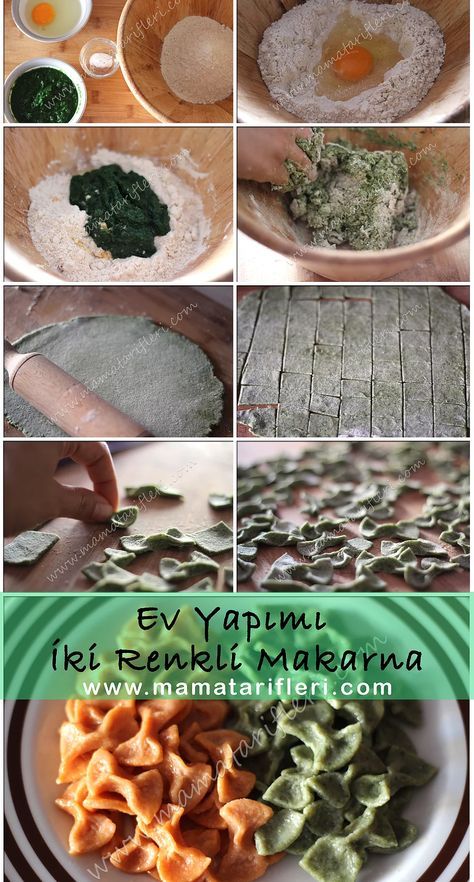
1 Comment
Leave A Comment
You Might Also Like...
The Thing About Self-Care
Eating Out at a Restaurant with a Baby or Toddler
Skin Care Tips for Babies With Sensitive Skin
Baby Food Just mix with breast milk, formula, or water!
Toddler Snacks Melt in mouth with no added sugar, ever.
Variety Packs Description text goes here.
★ Judge.me Reviews
Great breakfast option
Love the different texture and taste!
My Daughter’s Favorite
Eleanor loves all of Amara’s meals but her absolute favorite is the mango.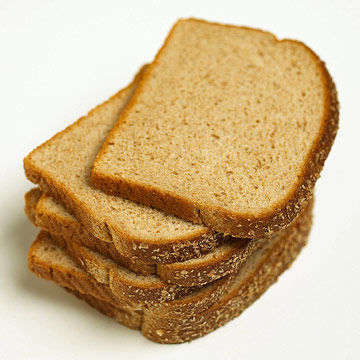 The convenience of these packets is unmatched. Plus, knowing they’re made from real, organic fruit is a game-changer! Thank you for making these thoughtful foods for my growing girl!
The convenience of these packets is unmatched. Plus, knowing they’re made from real, organic fruit is a game-changer! Thank you for making these thoughtful foods for my growing girl!
Excellent
My baby absolutely loves these melts! I feel goood about serving these
Love these!
I love these and so does my baby! I love the clean ingredients and my baby loves all the flavors. I’m so thankful to have found a snack that’s easy to grab for on the go
Tasty Grains & Protein
My baby has loved this one from day one. Plus I feel good knowing it has fiber and plenty of protein. I also like that it can be mixed with water or milk and that the texture can be changed to our preference.
Load More Reviews
5 Foods to Always Have on Hand to Feed Baby
Your baby has started solids, and the world is her oyster! (Okay, more like spoonful of fish puree. ) In the next several months, you’ll be introducing lots of different foods—but be sure you’re off to a healthy start by making these five regulars on her plate:
) In the next several months, you’ll be introducing lots of different foods—but be sure you’re off to a healthy start by making these five regulars on her plate:
1. Veggies: Instilling an appreciation of and taste for veggies is important. Vegetables are packed with vitamins, minerals, and fiber, so they should be mainstays of the diet for life. And don’t worry: Introducing fruit before veggies isn’t the deal-breaker you may have heard it is. If your baby gets the sweet taste of fruit before less-sweet (and sometimes slightly bitter) veggies, it doesn’t mean she’ll reject them. Just continue to serve them both every day.
Feeding Tips: Offer your baby different colors of veggies—including green, yellow, orange—and don’t be discouraged if your baby turns up her nose at a certain one. Simply offer it another time.
2. Meat or iron-fortified cereal: For years, iron-fortified rice cereal was recommended as the must-have starter food. Now, many pediatricians agree that the order you introduce foods isn’t crucial–but having a source of iron is.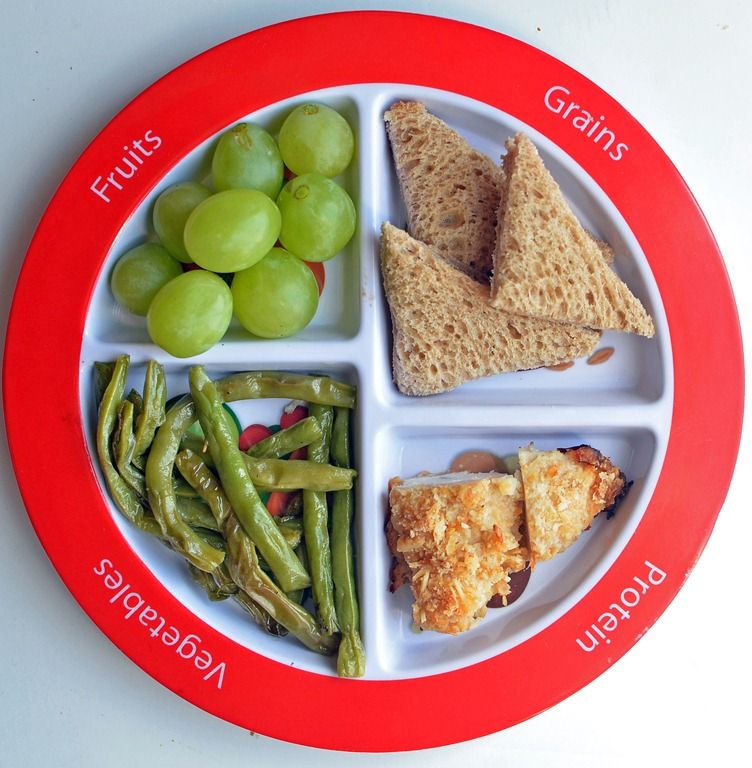 Iron is critical for kids, especially after six months when your baby’s natural stores of the mineral become depleted.
Iron is critical for kids, especially after six months when your baby’s natural stores of the mineral become depleted.
Feeding Tips: Be sure all meats are well-cooked (and well pureed at first). Though you should check with your pediatrician first, keep in mind that you can also introduce fish when babies start solids at six months.
3. Full-Fat Yogurt: Okay, we may be biased here–but the fact is, yogurt’s got a lot of what baby needs right now: fat for her developing brain, calcium and vitamin D for growing bones. It’s approved by the American Academy of Pediatrics for babies starting at six months.
Feeding Tips: Feed your baby straight-up plain yogurt or swirl in fruit or veggie purees or baby oatmeal. For older babies, try seasoning it with spices like cinnamon and ginger.
4. Fruit: Your baby will delight in the sweetness of fruit. And you’ll be happy knowing he’s getting vitamins, fiber, hydrating fluids, and lots of health-protective plant compounds.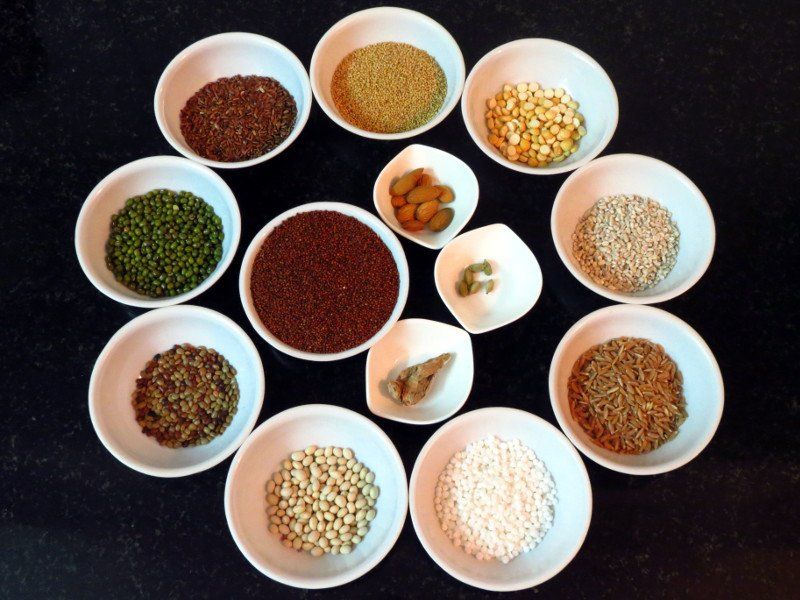
Feeding Tips: If you’re making your own baby food, be sure to wash all fruits thoroughly, even if they’re organic. (Learn more about organic fruits and veggies here.) If you’re trying baby-led weaning, give baby handheld pieces of very ripe, soft fruit.
5. Whole Grains: Whole grains like whole wheat pasta and whole grain bread and cereal have more fiber, protein, and vitamins than refined grains like white bread do. Whole grains also tend to have a stronger flavor and chewier texture, so it’s smart to introduce them early on so your baby develops a taste for them.
Feeding Tips: Oatmeal is a natural whole grain you can serve plain or mixed with fruit purees. Pieces of whole wheat pasta (like rotini and bowties), and strips of French toast or pancakes made from whole grain bread and flour are all fun finger foods for older babies.
How to teach a child to eat a healthy breakfast?
- Material Information
- Health
- Views: 994
Offering children this or that breakfast option , you may encounter certain problems.
The solutions, advice, and information below are designed to encourage them to eat whole grains, limit the harmful effects of advertising, and introduce rules for visiting fast food restaurants and donut shops in the morning.
Question: Children get angry and noisy because they don't get their favorite breakfast cereals, cookies and donuts. How to go through the transition period?
Answer: When children stop getting their favorite breakfast foods, dissatisfaction is common. Use the guidelines below.
- Reassure the children that the ban on their favorite foods is temporary: after the end of the program, they will be able to eat them from time to time (although not more than once or twice a month, but it is not necessary to tell them about it). There is a chance that you will have time to accustom children to healthy breakfasts and the desire to eat empty calories will decrease or disappear altogether.
- Show your child that you can hear his despair, anger and pain.
 In response to annoyed remarks, say: "I understand that you are not happy, but this will pass." Let the child see that his feelings matter, but do not follow his lead.
In response to annoyed remarks, say: "I understand that you are not happy, but this will pass." Let the child see that his feelings matter, but do not follow his lead. - Try to cancel your favorite treats at the beginning of the weekend or on a day when you have time in the morning. Even if the child makes a scandal, he will not be late for the bus, for the section, for classes because of this. If you rush, the stressful situation will only get worse.
- Remove food gradually rather than attacking breakfast cereals, cookies, donuts and other "candies in disguise" at the same time. First, replace your favorite breakfast cereal with whole grains. Once your child gets used to it, replace wheat flour toast with whole grain toast. Keep up the good work until all sweets are replaced by healthy alternatives. Never exchange one harmful product for another harmful one.
- Enter a reward system - we discussed it in previous chapters.
- Try some of the techniques we've covered so far to help you deal with withdrawal.

Child must:
- properly rest;
- relieve irritation daily through physical activity;
- be sure to be in the sun and fresh air every day;
- drink enough water to avoid dehydration;
- have a time and place to let off steam.
Do not interfere if the child is angry and out of sorts. Talk to him calmly.
Question: What if my child refuses to eat whole grains?
Answer: Replacing refined grains with whole grains is, generally speaking, a whole process. If your kids are only used to regular pastries, they probably won't like the taste and texture of whole foods and will protest. Therefore, do not rush. If you decide to cook pasta, take H whole grains and % regular. Gradually increase the amount of a useful product until you bring it to 100 percent. If the color of whole-grain pasta immediately turns off, make a thick sauce: tomato sauce works well. The same trick works with rice, cereals, and cold breakfasts: add more and more whole grains each day until you're completely out of sweetened ones.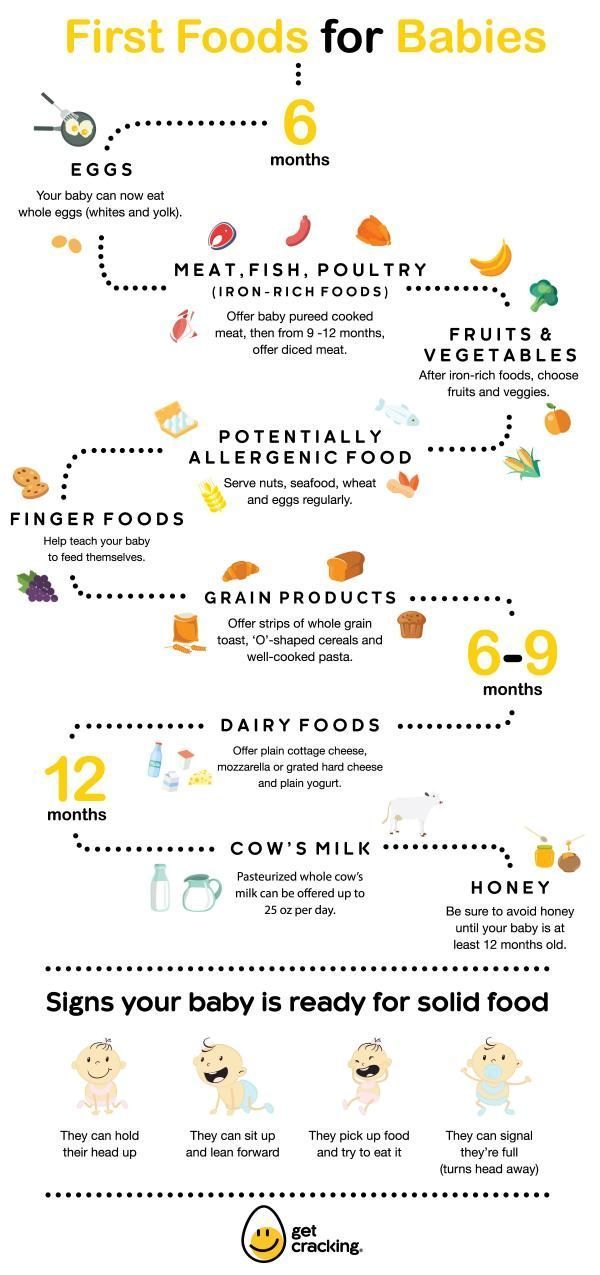
Whole grain bread is a different story. It has a distinctive appearance (it is denser, darker than white, and grains are visible on the cut), so it is more difficult to outwit a child. Many parents enjoy "whole grain white" bread made from special varieties of wheat, which has recently appeared on the market. At first glance, this may seem like a great way out, but not everything is so simple.
- Many white whole grain products contain more processed wheat flour than whole wheat flour, and some do not contain whole wheat at all.
- Many chemicals are added to such products to make them as similar as possible to ordinary white bread in appearance, texture and taste.
- Giving your child processed bread, even white whole grain varieties, will not teach him to enjoy the taste and texture of other, coarser whole grain foods.
- Whole-grain white bread is, first of all, a tricky marketing: very often whole grains are not the first ingredients in it.
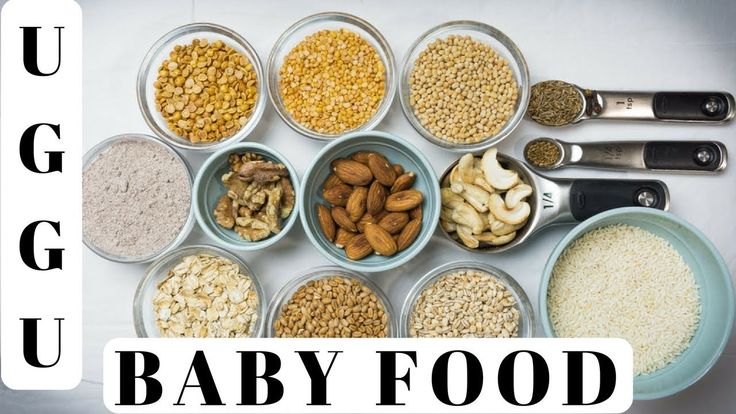
You will most likely need to bribe your child with something to get him to eat whole grain bread. If he is still small, try to encourage him with stickers: we talked about this in the first chapter. At an older age, a points system will come in handy. The main thing is to get the child to try, because then he will get used to the taste and texture of whole grains, and daily fights will subside on their own. When you manage to switch to whole grains, don't back down and stop buying refined ones. Children love to eat what they are used to.
Question: What should I do if my daughter wants only what is shown on TV?
Answer: An American child, by the time he enters first grade, has already spent as much time watching TV as it takes three years of school, which is 40,000 commercials a year, half of which are about food, and 98 percent of them are food harmful. By the age of 18, he will see 200,000 commercials. What to call it, if not brainwashing?
You can teach your child to turn off the sound during commercial breaks to limit exposure to harmful food and drink advertisements. Manufacturers spend millions to get your child to demand their products in the store and at the dinner table, or even better, to convince them to consume what they show directly from the TV (and this leads to overeating).
Manufacturers spend millions to get your child to demand their products in the store and at the dinner table, or even better, to convince them to consume what they show directly from the TV (and this leads to overeating).
If you pay attention to the ad for wheat flour toaster, you will notice that the children are dancing, laughing, rejoicing in it. The subtext is simple: “Good parents should buy foods that will make their children happy.” This message penetrates the subconscious of many adults, they fall for the bait and begin to think that food is joy, and children should be pleased. But don't be fooled. Joy is when people communicate with each other. Joy is the time spent with children, when they help you cook, when you sit down at the dinner table with the whole family. If you try to give children foods that will supposedly make them happy, they will become accustomed to over-sweetened, artificial, floury and fatty foods. Such food is also called junk food, and do not pay attention to the fact that it is sold under the guise of being useful.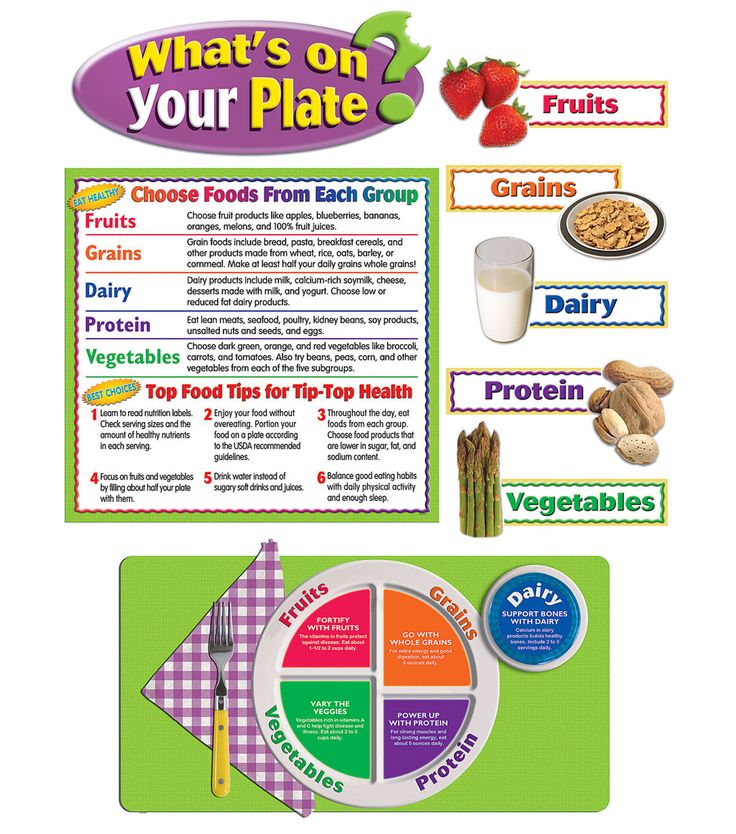
Q: How can I break the habit of stopping at cafes and donut shops?
Answer: Before leaving the house, children should definitely have something healthy for breakfast. If the child is full, he will most likely not demand to stop at the golden letter M or the donut shop. Make sure that there is something to eat in the car: with healthy products you will distract children from sweets before and after dinner. Apples, almonds, homemade mixes, whole grain sticks will come in very handy.
At the beginning of the second stage, tell your child that you will no longer be going to fast food and cafes to buy donuts and other sweets. Explain that these foods are preventing him from reaching his potential, growing big and strong. Preparation and the right approach will help the child get involved in the process and set it in the right way before leaving the house. Promise that after the end of the program you will stop by once or twice a month for sweets. We don't recommend banning them completely - just set reasonable limits and stick to them strictly: bad habits are hard to break.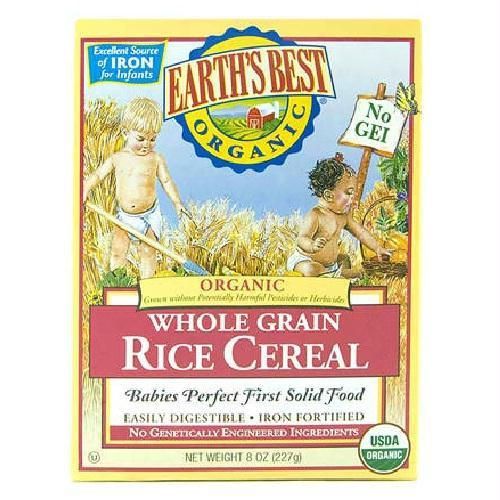
When visiting such an establishment, do not forget to look at the sugar content in products - it can vary greatly. For example, the glazed donut in Dunkin' Donuts contains 12g of sugar, the glazed dunkler has 23g, and the donut with blueberry topping has a whopping 52g of sugar. The websites of all restaurants have information about the nutritional value of products. In the restaurant itself, it should also be, but you need to ask for it.
See: "How to wean a child from sweets" in the section "Books" .
- Back
- Forward
Switching to whole grains is easy
- Contacts
- FAQ
Switching to whole grains is easy. Plus, it's very tasty!
And most cereal-based products have whole grain equivalents:
- White bread can be replaced with whole grain bread (or “wholemeal bread”). Great for school lunches.
- White rice can be substituted for whole grain rice such as brown, brown basmati and wild rice (which is actually wild grass seed).
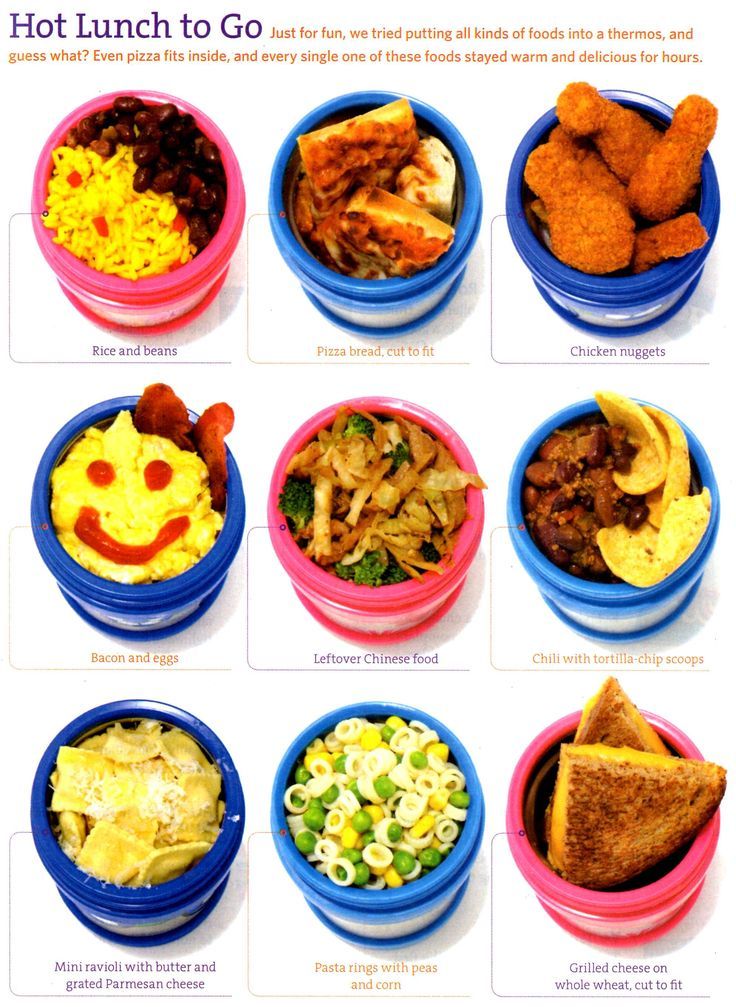 With them on your plate will appear not only tasty, but also a colorful variety that goes well with vegetables.
With them on your plate will appear not only tasty, but also a colorful variety that goes well with vegetables. - Substitute durum wheat pasta for pasta - just delicious!
- Instead of regular pancakes, wholemeal pancakes. What kid would say no to pancakes? And they will love these too.
Help the children choose whole grains.
Whole grains taste good, but some people may need time to get used to their unusual brown color. Children may be suspicious of pasta, bread, or rice that is different in color from what they are used to. Over time, they will get used to it. Here are some tips on how to help them with this.
- Mix whole-grain pasta with regular pasta (whole-grain pasta takes longer to cook, so start cooking first and add regular pasta a little later).
- Gradually reduce the amount of regular pasta. Very soon, only whole grains will be left.
- Sprinkle cooked brown rice with plain white bread crumbs to make it tastier and lighter.

- For sandwiches, use one slice of regular white bread and one slice of whole grain bread - a great way to add whole grains to school lunches!
Surprising Facts About Whole Grains
Brown Products: Are They All Whole Grains?
Before you decide to buy all whole grains, you should know that not all "brown" products are whole grains. They may have this color due to added ingredients such as caramel. So when you see descriptions like “multi-grain,” “rich in fiber,” “stone-milled,” “100% wheat,” or “seven grains,” it doesn’t mean that you are looking at whole grains. Read the label carefully and look for the word "whole". If the product is made from "whole grains" - this is what you need. And if whole grains are at the very beginning of the product description, most likely, such food is really very rich in whole grains (Fresh bread in the bakery may not have a label with the composition, so it's best to just ask the seller if he has whole grain bread) .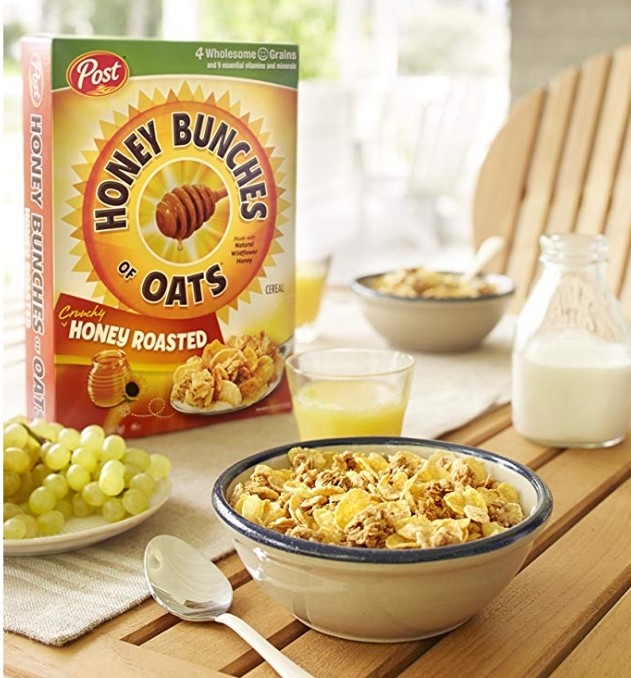
Top tips for adding whole grains to your diet
Looking for other ways to add whole grains to your diet? Try it!
Substitution: Replace white flour with whole wheat flour each time you cook. Cookies, muffins and pancakes made from whole grain flour will be just as good as regular ones. To get used to a new flour, try mixing regular and whole wheat flour first, gradually increasing the amount of the latter.
Add some whole grains: Add whole grains such as barley to vegetable soups and stews, and bulgur to casseroles or stir-fries.
Whole grain breading: Use oatmeal or crushed unsweetened cereal as a breading for fried chicken, fish, or pork chops.
Try something new: Try risotto instead of white rice or other whole grain dishes like barley, brown rice, bulgur, millet or quinoa.
Breakfast cereals: Try whole grain breakfast cereals - there are plenty of choices - and many of them your kids will probably already love.
Buy the Whole Grain Cookbook: Whole grain cookbooks are available, full of delicious recipes that will surprise and delight your entire family. Try this:
- The Complete Whole Grain Cook Book, by Carol Gelles
- Whole Grains for a New Generation: Light Dishes, Hearty Meals, Sweet Treats, and Sundry Snacks for the Everyday Cook, by Liana Krissoff
- Whole Grain Health Saver Cook Book, by Miriam Polunin
Whole Grain Snacks!
Looking for a quick bite to eat or wondering what to make for tea? Some snack foods can be a source of whole grains. Try this:
- Popcorn
- Whole grain pretzels or corn snacks
- Whole grain breakfast cereal
- Whole grain crackers
- Whole grain bars
Do you know
that...?
Count do not count
One bushel (36.3 liters) of wheat contains about a million grains.
Whole Grain War
Amaranth is a whole grain of great importance to the ancient Aztecs.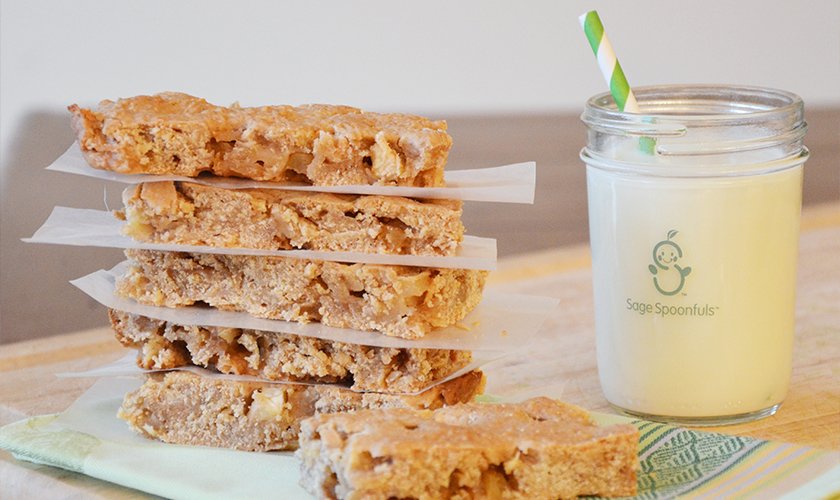 Therefore, during the Spanish invasion, the leader of the conquistadors, Cortes, tried to destroy the Aztecs by forbidding the cultivation of this plant. Anyone who violated the ban, waiting for death!
Therefore, during the Spanish invasion, the leader of the conquistadors, Cortes, tried to destroy the Aztecs by forbidding the cultivation of this plant. Anyone who violated the ban, waiting for death!
How to add more whole grains to your diet 9
USDA and US Department of Health and Human Services (2010).Brands of ready -made breakfasts and products
Write We
- Write us
- Frequently asked questions
- Personal communication
How do I find products from integral zlavks?
Two things to remember: • On product packaging, look for the label “whole” or “whole” before the name of the cereal, such as “whole wheat” or “whole oats”.




